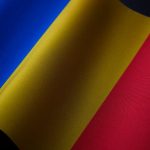Ramie fabric is a natural fiber known for its strength, silky sheen, and durability, used since ancient times in China and Egypt. You’ll find it highly absorbent, wrinkle-resistant, and naturally antibacterial, making it great for comfortable, long-lasting clothing and home textiles. It’s eco-friendly too, needing less water and fewer chemicals than cotton. If you want to understand how it’s harvested, its unique benefits, and why it’s gaining popularity in sustainable fashion, keep exploring this guide.
Table of Contents
Key Takeaways
- Ramie fabric is a natural fiber from the ramie plant, valued for its strength, luster, and durability since ancient times.
- It undergoes harvesting by cutting, decortication, degumming, washing, drying, and combing before being spun into yarn.
- Ramie features a natural sheen like silk, resists wrinkles and bacteria, and effectively wicks moisture for comfort.
- Commonly used in summer clothing, blended textiles, upholstery, and high-end fashion due to its crisp texture and shape retention.
- Ramie is sustainable, requiring less water, fewer chemicals, multiple annual harvests, and is biodegradable.
History and Origins of Ramie Fabric
Although ramie fabric has gained popularity in modern textiles, its history stretches back thousands of years. You’ll find that ancient civilizations in China and Egypt valued ramie for its strength and luster. It was used to make clothing, ceremonial robes, and even household items.
As you explore its origins, you’ll see that ramie was often mentioned in historical texts and trade records, proving its significance across various cultures. You’ll also discover that ramie’s natural resistance to bacteria and wrinkles made it ideal for everyday wear long before synthetic fibers existed.
How Ramie Fiber Is Harvested and Processed
When you look closely at how ramie fiber is harvested and processed, you’ll see it’s a meticulous but rewarding procedure.
First, workers cut the ramie plants at the base, typically after about 4-6 months of growth.
Then, the stalks undergo a process called decortication, where the outer bark is stripped away to expose the inner fibers.
Decortication removes the outer bark to reveal the valuable inner ramie fibers.
Next, these fibers are subjected to degumming, which removes the gummy substances binding them together. This step usually involves soaking the fibers in water with chemicals or enzymes.
Afterward, the fibers are washed, dried, and combed to separate and align them.
Finally, the prepared ramie fibers are spun into yarn, ready for weaving into fabric.
This careful processing preserves ramie’s strength and quality for textile use.
Unique Characteristics and Benefits of Ramie
Because ramie fibers undergo such careful processing, you’ll find that the fabric offers a unique blend of strength, luster, and durability.
When you wear or use ramie, you’ll notice its natural sheen that rivals silk, giving your textiles an elegant appearance without added treatments.
Ramie is also highly absorbent, so it keeps you cool and comfortable by wicking moisture away effectively.
You’ll appreciate that it resists wrinkling and holds shape well, making maintenance easier.
Plus, ramie is resistant to bacteria and mildew, which means your garments stay fresher longer.
Its durability doesn’t fade with repeated washing, so ramie items maintain their quality over time.
In short, ramie combines beauty and functionality, making it a smart choice for those valuing both.
Common Uses and Applications in Fashion and Textiles
Since ramie combines durability with a silky sheen, you’ll often find it used in both everyday and luxury textiles.
Ramie’s blend of durability and silky sheen makes it a favorite in both casual and luxury fabrics.
If you’re exploring summer clothing, ramie’s breathability and moisture-wicking properties make it perfect for shirts, dresses, and blouses. You’ll also see it blended with cotton or wool to add strength without sacrificing softness.
In home décor, ramie’s crisp texture works well for upholstery, curtains, and table linens, giving your space a natural yet refined look.
Designers appreciate ramie for its ability to hold shape and resist wrinkles, so you’ll often find it in tailored garments and high-end fashion collections.
When you pick ramie fabric, you’re choosing versatility that suits both casual wear and chic, sophisticated styles.
Environmental Impact and Sustainability of Ramie
Beyond its versatile uses in fashion and home décor, ramie also stands out for its environmental benefits.
When you choose ramie fabric, you opt for a natural fiber that requires minimal pesticides and fertilizers compared to cotton. Its cultivation uses considerably less water, which helps conserve this precious resource.
Additionally, ramie plants grow quickly and can be harvested multiple times a year, promoting sustainable farming practices. The processing of ramie fibers involves fewer chemicals, reducing environmental pollution.
Plus, ramie is biodegradable, so it breaks down naturally without harming ecosystems.
Frequently Asked Questions
How Do You Care for and Wash Ramie Fabric Garments?
You should hand wash ramie fabric garments in cold water with mild detergent, then air dry them. Avoid wringing or twisting to prevent damage, and iron on low heat while the fabric is slightly damp for best results.
Can Ramie Fabric Be Blended With Other Fibers?
You can blend ramie with cotton for softness, with polyester for durability, and with silk for sheen. You’ll enjoy enhanced strength, improved texture, and versatile uses when you mix ramie with other fibers.
Is Ramie Fabric Hypoallergenic?
You’ll find ramie fabric is generally hypoallergenic, so it’s great if you have sensitive skin. It resists bacteria and mold, reducing irritation risks, making it a comfortable, breathable option for you to wear daily.
How Does Ramie Fabric Feel Compared to Cotton or Linen?
You won’t mistake ramie for cotton’s softness or linen’s crispness—it feels sturdier and a bit rougher. But ironically, that texture gives it a unique strength and breathability you’ll actually appreciate on warm days.
What Are the Price Ranges for Ramie Fabric Products?
You’ll find ramie fabric products priced moderately, often ranging from $10 to $30 per yard. Prices vary based on quality and blend, so you can expect affordable options alongside premium, higher-cost choices depending on your needs.
- Does Old Gore-Tex Still Work Effectively? - July 2, 2025
- What Does It Mean When Gore-Tex “Wets Out”? - July 2, 2025
- Does the Gore-Tex Warranty Apply to Nike Products? - July 2, 2025







